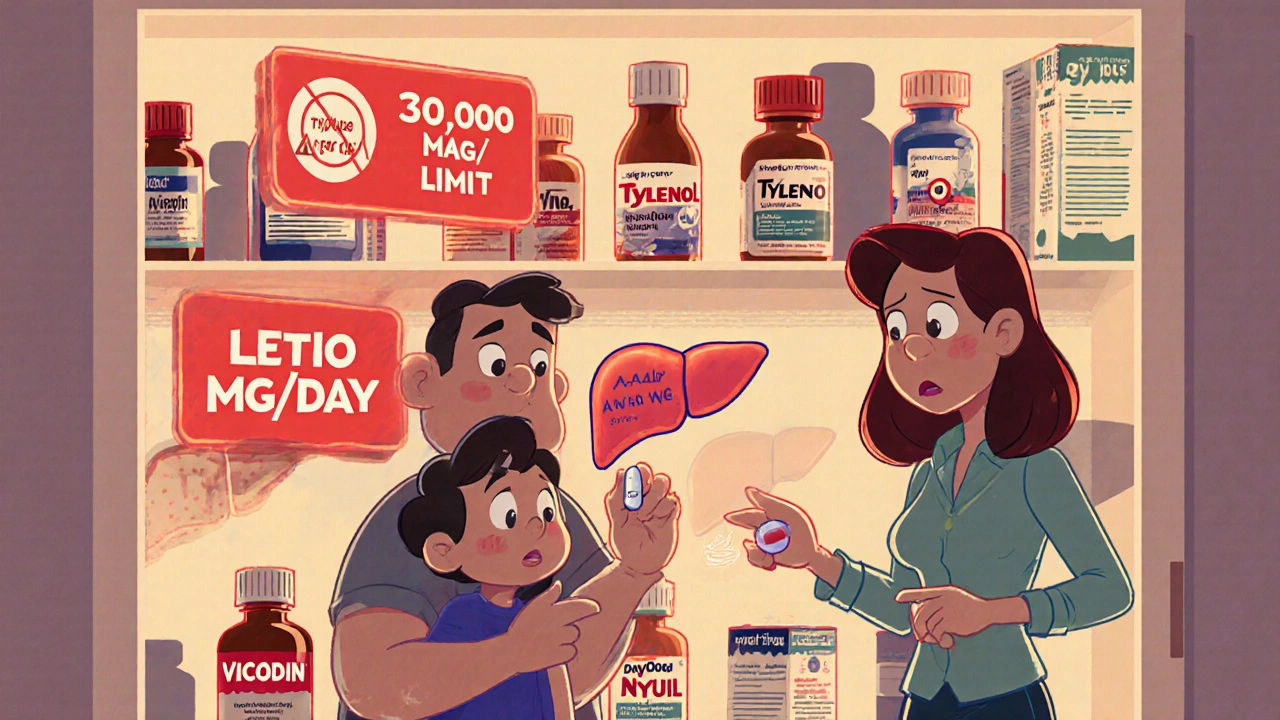Acetaminophen Prevention: Safe Use, Risks, and Smart Alternatives
When you reach for acetaminophen, a common over-the-counter pain reliever and fever reducer also known as paracetamol. Also known as paracetamol, it's in more than 600 medicines—from cold pills to sleep aids—and it's one of the leading causes of accidental liver failure in the U.S. Most people think it’s harmless because it’s sold on shelves without a prescription. But taking just a little too much—over days, or even in one big dose—can quietly wreck your liver before you feel any symptoms.
Acetaminophen prevention isn’t about avoiding it entirely. It’s about knowing where it hides and how much your body can handle. A single 1,000 mg tablet is safe for most adults. But stack three of them with a cold medicine that also contains acetaminophen, and you’ve hit the daily limit without even trying. The liver damage, the serious, sometimes fatal injury caused by excessive acetaminophen breakdown doesn’t come with warning signs like stomach pain or dizziness. It sneaks in. By the time you feel nauseous or yellow, it’s often too late for simple fixes.
That’s why knowing your pain relief alternatives, other medications or methods that manage pain without the liver risks of acetaminophen matters. If you’re dealing with chronic pain, inflammation, or headaches, NSAIDs like ibuprofen or naproxen might be better options—unless you have kidney issues or stomach ulcers. For muscle soreness or joint pain, topical creams, ice packs, or even gentle movement can reduce reliance on pills. And if you’re on multiple meds, check every label. Acetaminophen shows up under dozens of names: APAP, Tylenol, Excedrin, NyQuil, and more. Your pharmacist can help you map out what’s safe.
People over 65, those who drink alcohol regularly, or anyone with liver disease need to be extra careful. Even normal doses can be risky. There’s no magic number that works for everyone—your liver’s tolerance depends on your weight, health, and other meds. The best rule? Never take more than 3,000 mg a day unless your doctor says so. And if you’re unsure whether a medicine contains acetaminophen, don’t guess. Read the ingredients. Write it down. Ask.
This collection of posts doesn’t just talk about acetaminophen. It shows you how it fits into the bigger picture of medication safety. You’ll find comparisons between acetaminophen and other painkillers like Voveran, real talk about drug interactions with coffee and tea, and deep dives into how your body processes meds in fasted or fed states. You’ll see how one pill can quietly connect to liver health, nerve blocks, and even probiotic risks. This isn’t just about avoiding an overdose. It’s about understanding how your body reacts to the things you take every day—and making smarter choices before you end up in the ER.

